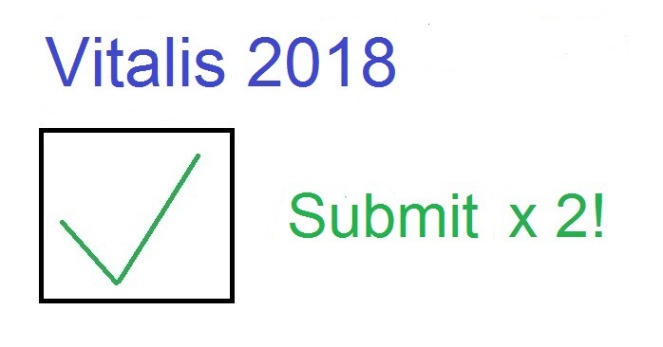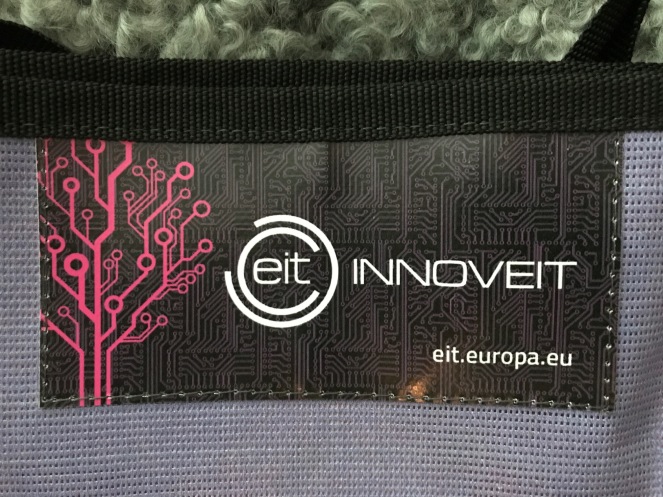
As I wrote in my last blog post the EIT Alumni Connect event was hosted in Budapest October 15 – October 16. I really had a great time during this event and if I should choose one word to describe the overall impression I got from the event it would be “Inspiring”! There were a lot of inspiring and thought provoking talks/keynotes spread over these two days and the hands-on activities provided learning as well as networking opportunities. A lot happened during these days and I cannot cover everything in the blog post, but I will at least make a few important points.
First of all, I really liked the setting in the room we all gathered in during the event. There were around 100 participants and 16 round tables and the activities performed especially during the first day made sure that there were representatives from several alumni networks (EIT Health, EIT Digital, EIT Raw Materials, Climate-KIC and InnoEnergy) by each table. This gave an excellent opportunity to develop an understanding of the different main areas where EIT is involved. One of the main aims of the event was to provide an opportunity to connect with other alumni and the setting ensured that networking could be performed both within and across the represented areas.
One especially interesting group activity was performed during the last part (before dinner) of the first day. The main aim was to work on real problems identified by the participants – problems related to the main areas of EIT. The group work activity started out by a discussion among the participants at the respective tables, about different project ideas that we would like to work with. My idea was, of course, based on patient accessible electronic health records and more specifically means of using these systems as mediators during patient visits. The ideas presented at my table were very different from one another since the participants represented different alumni networks. The next step was a very short pitch, given on stage so that everyone could hear. About 20 participants pitched ideas. Based on the pitches the rest of the participants should decide which idea they wanted to work with for the rest of the day. I never pitched my own idea, since I was really curious about another participant’s idea (about developing a system to enable digital consent for use of health data in research) and hence wanted to work on that instead. During the following 1.5 hours we discussed the respective projects within the newly formed project groups. The focus was to develop the idea and to develop a pitch which should be presented to a jury. This step was really important, since the three top groups would get a grant of 5000 Euros from EIT, which they should use to implement the ideas! Just before lunch the second day the three winners, named EIT Workshop, Impact and EIT Chaos, were announced.
The gamification component introduced in the group work activity was really working. Everyone gave great pitches and there were so many interesting ideas represented in the room. I’m quite sure the jury had a tuff choice to make. I also think it’s great the EIT actually give grants to promising projects. EIT support for projects and most of all start-ups was a theme that was covered in almost all keynotes and activities. The communities really support entrepreneurship and innovation. The different EIT KICs (Knowledge Innovation Communities) have supported several startups and projects through grants, accelerators and incubators. Some of these startups, which have become real success stories, were show cased during one of the presentations.
The keynotes covered EIT in general as well as different opportunities and challenges when it comes to most of all innovation and entrepreneurship. Some lectures also covered successful spin-offs of the kind of group project activities I described above, from earlier years of EIT Alumni Connect. One of this spin-offs was the new group Women@EIT. The opening keynote showed that many good things have come from the EIT KICs during the recent years. E.g. several companies supported by EIT have great impact in many different areas and more and more students graduate from EIT master programs. A few challenges were, however, also mentioned. One identified need was that end users should be involved to a higher degree (HCI researchers really have an opportunity to contribute here!). EIT also wants to add new KICs so that all major issues we face today are covered (integration, security and water protection are a few areas that are not covered today). The board also wants to create even more collaborations across KICs. I really think the last point is important, since key challenges must be addressed from several different angles.
I really enjoyed being a part of the EIT Alumni Connect activity and I’m really considering applying for one of the open positions at the EIT Health Alumni board. (as I said earlier EIT Health Alumni is fairly new). I think I can make important contributions since I’m both a chronic patient and a researcher – maybe it would be beneficial to have a patient representative on the board? There were quite a few open positions to choose from (they were all presented during a lunch meeting with the current board members earlier today).
I will end this post by some words different participants used to describe EIT Alumni Connect during the first session today. I think they summarize what EIT is about in a good way: networking, explosive, fun, collaboration, innovation, inspiration.
![]()






